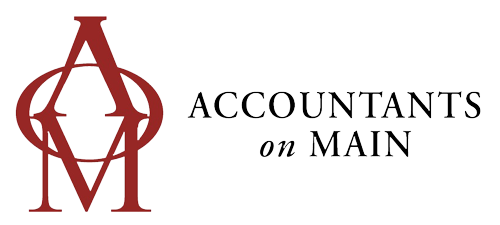COVID-19 Business Update – 12 March 2021
Welcome back to our Weekly Digest. Read on for the latest updates and some ideas to help us all move forward.
Canada to Receive More Than 910,000 Doses of COVID-19 Vaccine This Week
The Public Health Agency of Canada says nearly 445,000 doses of the Pfizer-BioNTech vaccine will arrive, and 465,000 shots are expected from Moderna.
The influx of new vaccine doses comes as the federal government looks for providers to finalize the delivery of eight million doses by 31 March. This includes 5.5 million from Pfizer-BioNtech and two million from Moderna. Last week, Canada received 500,000 doses from AstraZeneca-Oxford.
Between April and June, 23 million doses of both Pfizer and Moderna are anticipated, and at least 1.5 million doses of the AstraZeneca vaccine by May.
Canada Authorizes Johnson & Johnson’s COVID-19 Vaccine
Federal regulators have cleared a fourth COVID-19 vaccine for use in Canada. Johnson & Johnson’s vaccine is widely seen as one of the easiest to distribute because it requires only a single shot and can be stored for long periods of time at regular refrigerator temperatures of 2 to 8 degrees Celsius.
Prime Minister Justin Trudeau said they had been warned of production delays and currently do not have an expected date to receive the first deliveries.
Non-essential Retail Stores in Toronto and Peel Reopened
Starting Monday, non-essential retail stores in Toronto and Peel were allowed to reopen with capacity capped at 25%. There is also mandatory screening for all retailers, employees, and shoppers entering the shops.
Once full capacity has been reached, a one-in-one-out system will be implemented. Masks are also mandatory and food or beverage consumption is not allowed. In-dining areas are closed, but food court retails are open for takeout.
Meanwhile, grocery stores, pharmacies, and convenience stores can operate at 50% capacity.
Government Invests $7.8 Million in Worker Safety at Meat Plants
The government has earmarked $7.8 million to help meat companies safeguard the health and safety of workers from COVID-19.
Through the Emergency Processing Fund for 24 meat processing companies across the Prairies, adjustments can be made to enable social distancing, buy reusable personal protective equipment (PPE), install protective barriers, improve sanitation, and train employees.
Women bearing the brunt of COVID job losses
According to recent numbers from Statistics Canada, the Canadian economy has had 858,000 fewer jobs than it did before the pandemic, but these losses are not being shared evenly.
Women — especially ones who weren’t earning much to begin with — are bearing the brunt of the job losses, as they make up a majority of the workforce in hard-hit sectors including hospitality, retail and food.
RBC released a report revealing nearly 100,000 working-age Canadian women have left the workforce completely since the pandemic started.
Dawn Desjardins, an author of the RBC report said “the longer these women are out of the labour force, the greater the risk of skills erosion, which could potentially hamper their ability to get rehired or to transition to different roles as the economy evolves.”
Many women have been forced to pivot to new jobs and careers and have mentioned that knowing how to participate in the digital economy will be really essential moving forward.
Canada-US Border Closed to Non-essential Travel Until at Least March 21
The border between Canada and the United States will remain closed to non-essential travel for at least until March 21, exactly one year after the border was first shut down to curb the spread of the coronavirus.
The border has remained open for essential travel throughout the pandemic to avoid disruptions in the flow of food, medical supplies, and other crucial goods between Canada and the US.
Government Extends Access to COVID-19 Benefits
The Minister of Employment, Workforce Development and Disability Inclusion, Carla Qualtrough, announced the federal government’s intent to introduce amendments to increase the number of weeks of benefits available for the Canada Recovery Benefit (CRB), the Canada Recovery Sickness Benefit (CRSB), the Canada Recovery Caregiving Benefit (CRCB) and Employment Insurance (EI) regular benefits.
The proposed changes include:
- increase the number of weeks available under the Canada Recovery Benefit (CRB) and the Canada Recovery Caregiving Benefit (CRCB) by 12 weeks extending the maximum duration of the benefits through regulation from 26 weeks to up to 38 weeks;
- increase the number of weeks available under the Canada Recovery Sickness Benefit (CRSB) through regulation from the current 2 weeks to 4 weeks; and
- increase the number of weeks of EI regular benefits available by up to 24 weeks to a maximum of 50 weeks through legislation, for claims that are made between September 27, 2020 and September 25, 2021.
More information can be found here.
HASCAP Loan Applications Now Open
New loan applications from the Highly Affected Sectors Credit Availability Program (HASCAP) have opened starting February 1.
Loans start at between $25,000 and $1 million for a single business depending on the size of the operation, and run up to $6.25 million for companies with multiple locations like a chain of hotels or restaurants. Interest rates are set at 4% across the board, terms will be up to 10 years, with up to a 12-month postponement of principal payments at the start of the loan.
To be eligible, companies will have to show a year-over-year revenue drop of at least 50% over three months, not necessarily consecutive, in the eight months before the application.
Further details can be found here.
Government Expands Canada Emergency Business Account Loans
Starting December, eligible businesses facing financial difficulties due to COVID-19 can access a second CEBA loan of up to $20,000 – on top of the initial $40,000 that was available to small businesses. Half of this additional financing, up to $10,000, will be forgivable if the loan is repaid by December 31, 2022.
Applications for CEBA have been extended to March 31, 2021. More information can be found here. Alternatively, if you have any questions or require assistance, simply drop us a message.
Government Support for Businesses
The federal government continues to enact measures to mitigate the financial impact of the pandemic. Here are the available assistance you can take advantage of:
Wage Subsidies
- The Canada Emergency Wage Subsidy (CEWS) is intended to help businesses cover a portion of wages and keep employees on payroll. It continues until June 2021.
- The work-sharing program allows employees whose hours got reduced by an average of 10% to 60% to claim employment insurance for lost wages. This has been extended to 76 weeks from 38.
Rent Relief
- The Canada Emergency Rent Subsidy provides rent and mortgage assistance until June 2021. Businesses can make claims retroactively for the period of Sept. 27 to Oct. 24, 2020.
Business Loans
- The Canada Emergency Business Account (CEBA) offers government-guaranteed bank loans of up to $40,000 for small businesses. The deadline for the application has been extended to March 31, 2021.
- For mid-sized companies, the Business Development Bank of Canada’s mid-market financing program provides commercial loans between $12.5 million and $60 million.
Upcoming Key Dates
Below are the upcoming key payment and filing dates to take note of:
- Your tax return for 2020 has to be filed on or before 30 April 2021.
- For self-employed individuals, if you or your spouse or common-law partner carried on a business in 2020, your return for 2020 has to be filed by 15 June 2021. However, if you have a balance owing for 2020, you have to pay it on or before 30 April 2021.
Xero Launches Xero Verify
Xero has launched its own authentication app, Xero Verify, to give small businesses world-class data protection. The new app makes it easy for users to set up multi-factor authentication (MFA) on their Xero accounts.
It eliminates the need for codes and sends push notifications to your device for a fast and easy way to authenticate your login.
How it works
When you log in, Xero Verify will send a pop-up message to your phone. All you have to do is to open the notification and tap once to authenticate.
If you lose your device where the authenticator app is installed, you just need to turn off MFA, change your password, and then set up MFA on your new device.
How to Set Up MFA With Xero Verify
Follow these steps to set up MFA with Xero Verify on your device.
Get in touch
Contact us if you have any questions or want to discuss the next steps for your business.

